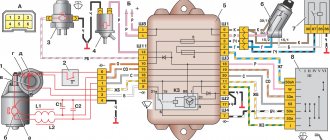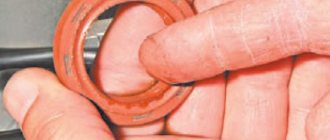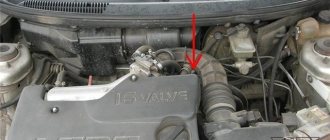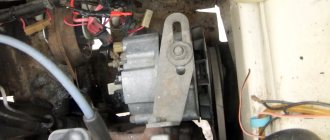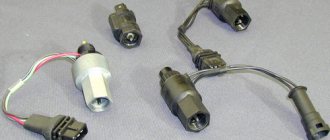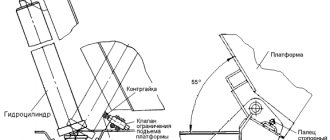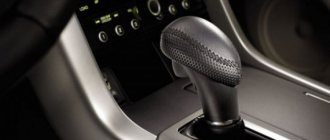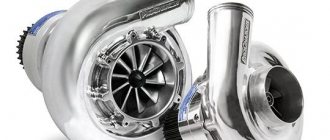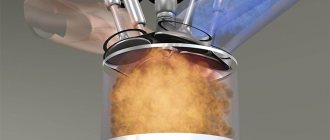One of the most famous developments of Soviet motor vehicles is the VAZ 2109 engine and its various modifications. Thus, the motor, which was developed back in 1982, serves faithfully to this day. This is one of the most common engines in the CIS.
It must be said that this is not considered one of the reliable units, but it is very repairable, which makes it quite popular among car enthusiasts.
Description and modifications
As such, a “nine” engine does not exist in nature. At least, the AvtoVAZ plant did not produce it. All 2109 models were equipped with a figure-eight power unit and its modifications. Of course, in many documents you can find the VAZ 2109 engine, but this is deception or ignorance.
But in the technical documentation of the manufacturer you cannot find information about the 2109 engine, since such an engine does not exist. Over the entire period of their production, all “nines” were equipped with engines with the following markings: VAZ-21081 (1.1 8V), VAZ-2108 (1.3 8V), VAZ-21083 (1.5 8V), VAZ- 2111-80 (1.5i 8V) and VAZ-11183-20 (1.6i 8V).
Candles
First of all, find out if there is a spark at all. The weakness of the latter allows you to start the engine while it remains hot, but it does not work when it is cold.
Unscrew the spark plug, place it against ground and crank the starter. If there is a spark, then there is probably a problem in the fuel system. We will tell you about it later.
It is necessary to do otherwise when the unscrewed spark plug works properly, but it turns out to be wet. Here you should check the timing belt. The latter sometimes jumps off, which disrupts the correct gas distribution and, accordingly, the VAZ engine does not want to start.
If you see that the spark plugs are filled with fuel, then perhaps this very circumstance is preventing you from starting the engine. Dry them with a burner or on a gas stove burner. When they turn out to be wet again during the next attempt, you will have to find out why this happened.
If there is no spark, the cause is sought further. It often lies in problems:
- crankshaft pulley or sensor that controls its position (DCPV);
- computer.
In most cases, the VAZ model 2109 injector does not want to start precisely because of the failure of the DPKV. Failure of other sensors does not prevent the engine from starting, it will simply not work correctly.
First, check whether the connector leading to it is intact and whether the wires are in good condition. It is the destruction or contamination of these elements that most often interferes with the normal operation of the DPKV, while the device itself is reliable.
To test the sensor, just hold a piece of metal close to it and measure the output voltage. It will fall if the piece of iron is taken away, and rise when it is brought close.
Another reason why a VAZ may not start is the crankshaft pulley. The disadvantage of this unit is that its teeth are partially made of rubber, which means they can come off or even scroll. This affects the sensor readings, and the computer, guided by them, does not want to supply voltage to the spark plugs. It’s not difficult to check - remove the casing from the timing belt (inspect it at the same time), and then examine the pulley.
There is a high probability that there is no spark due to a faulty ignition. First you should make sure that the connector leading to it is intact. Installing a known-good module on a Lada that does not want to start will allow you to confirm your suspicions.
It is imperative to inspect all wires. A break in them, even with working devices, often leads to the inability to start the engine.
Specifications
All engines that were installed on the VAZ 2109 were small in volume, but had sufficient power characteristics and dynamics. But things didn’t work out with the traction power. The engine power of the VAZ 2109 ranges from 54 to 81 horsepower. It is worth considering each engine option and its technical characteristics separately.
21081 (1.1 8V)
| Name | Index |
| Volume | 1.1 liter (1099 cc) |
| Number of cylinders | 4 |
| Number of valves | 8 |
| Fuel | Petrol |
| Injection system | Carburetor |
| Fuel consumption | 6,7 |
| Cylinder diameter | 76 |
| Cylinder operating order | 1-3-4-2 |
2108 (1.3 8V)
| Name | Index |
| Volume | 1.3 liters (1289 cc) |
| Number of cylinders | 4 |
| Number of valves | 8 |
| Fuel | Petrol |
| Injection system | Carburetor |
| Fuel consumption | 7.0 l |
| Cylinder diameter | 76 |
| Cylinder operating order | 1-3-4-2 |
21083 (1.5 8V)
| Name | Index |
| Volume | 1.5 liters (1499 cm3) |
| Number of cylinders | 4 |
| Number of valves | 8 |
| Fuel | Petrol |
| Injection system | Carburetor |
| Fuel consumption | 7.0 l |
| Cylinder diameter | 76 |
| Cylinder operating order | 1-3-4-2 |
2111-80 (1.5i 8V)
| Name | Index |
| Volume | 1.5 liters (1499 cm3) |
| Number of cylinders | 4 |
| Number of valves | 8 |
| Fuel | Petrol |
| Injection system | Injector |
| Fuel consumption | 7.5 l |
| Cylinder diameter | 82 |
| Cylinder operating order | 1-3-4-2 |
11183-20 (1.6i 8V)
| Name | Index |
| Volume | 1.6 liters (1596 cc) |
| Number of cylinders | 4 |
| Number of valves | 8 |
| Fuel | Petrol |
| Injection system | Injector |
| Fuel consumption | 9.5 l |
| Cylinder diameter | 82 |
| Cylinder operating order | 1-3-4-2 |
As you can see, the evolution of engines has come from the carburetor type to the injection type. Although with an increase in engine volume, fuel consumption also increased proportionally.
Another important fact remains the question: where is the engine number on old models of engines? As you know, the engine number was stamped on the cylinder block only from 1984 and on earlier versions that were exported. Therefore, you shouldn’t even look for this identifier on a 1983 power unit, since it simply doesn’t exist.
VAZ-2109
Small class passenger cars with front-wheel drive and a transverse engine.
Produced by the Volzhsky Automobile Plant since 1988. The body of the VAZ-2109 and VAZ-21093 is a monocoque, five-door, two-volume hatchback. The front seats have headrests and are adjustable in length and backrest angle. The rear seat can be folded down to increase luggage space. Cars can be equipped with an electrically heated rear window, wipers and washers for the rear window and headlights. Currently the model is called "Lada Samara"
Car modifications:
Engine.
Maud. VAZ-2108 (for the VAZ-2109 car), petrol, in-line, 4-cylinder, 76×71 mm, 1.3 l, compression ratio 9.9, operating order 1-3-4-2. power 47 kW (63.7 hp) at 5600 rpm, torque 94 N-m (9.6 kgf-m) at 3400 rpm. Carburetor 2108-11070-10-78. Air filter - with automatic thermostat and replaceable filter element. Engine cooling system - with an electric fan that automatically turns on and off,
Mod.VAZ-21083 (for VAZ-21093, -21099 cars and their modifications), petrol, in-line, 4-cylinder. 82x71 mm, 1.5 l, compression ratio 9.9, operating order 1-3-4-2. power 51.5 kW (70 hp) at 5600 rpm, torque 106.4 N-m (10.85 kgf-m) at 3400 rpm.
Transmission.
The clutch is single-plate, with a diaphragm spring. The clutch release drive is cable. Gearbox: 5-speed, with synchronizers in forward gears. Before. Numbers: I-3.636; II-1.96; III-1.357, IV-0.941, V-0.784. ZX-3.53. The main gear is cylindrical, helical, gear ratio is 3.94. Differential - conical, two-satellite. The front wheels are driven by shafts with constant velocity joints.
Wheels and tires.
The wheels are disc, rim 4 1/2J13 for tube tires and 4 1/2J-13H2 for tubeless tires. Fastening - with 4 bolts. Tires - tube or tubeless 165/70R13, 155/80R13 or 175/70R13. Air pressure in tires is 2.0 kgf/cm. sq. Number of wheels 4+1.
Suspension.
The front is independent, with shock-absorbing struts, coil springs, lower wishbones with braces and an anti-roll bar (MacPherson strut). The rear is on longitudinal interconnected arms, with coil springs and hydraulic shock absorbers.
Brakes.
Working brake system: front brakes - disc, rear - drum, with automatic clearance adjustment. The drive is hydraulic, two-circuit, diagonal, with a vacuum booster and a brake force regulator. The parking brake is on the brake mechanisms of the rear wheels, the drive is cable. The spare brake is one of the circuits of the service brake system.
Steering.
The steering mechanism is rack and pinion.
Electrical equipment.
Voltage 12 V, ac. battery 6ST-55A, generator 37.3701, voltage regulator 17.3702. starter 29.3708; the ignition system is contactless, with an ignition coil 27.3705, an electronic switch 3620.3734 and a distribution sensor 40-3706. Spark plugs FE65P (Yugoslavia) or A17-DV-10.
Filling volumes and recommended operating materials.
Fuel tank - 43 l. AI-93 gasoline; cooling system - 7.8 l antifreeze A-40;
engine lubrication system - 3.5 l, M-12G, at temperatures from plus 35 to minus 10 degrees C; M-6/10G, at temperatures from plus 20 to minus 25 degrees C; M-5/10, at temperatures from plus 30 to minus 30 degrees C;
gearbox housing (5-speed) - 3.3 l, M-8GI at temperatures from plus 45 to minus 400 °C; M-12G, at temperatures from plus 45 to minus 25 degrees C; M-6/10G, and M-5/10G, at temperatures from plus 45 to minus 40 degrees C;
Repair and service
On average, repairs to internal combustion engines of VAZ 2109 modifications are done based on mileage. This figure is about 200,000 km. Engine overhauls are carried out similarly to any Zhiguli power unit. Since, compared to the Volgovsky engine, the Vazovsky is quite small, motorists often do the bulkhead in their garage with their own hands.
The 2109 engine is highly repairable, since the cast iron block is quite difficult to destroy, and the cost of the head is low, which allows you to repair the internal combustion engine cheaply and without much expense with your own hands. Another positive factor in the repair is that the power unit is simple in design and even inexperienced car enthusiasts are able to carry out minor repairs to the VAZ 2109 engine with their own hands.
The main problems that many people face include: changing the oil in the VAZ 2109 engine, replacing spark plugs and high-voltage wires, as well as overhauling and adjusting the carburetor. By the way, almost all engines were equipped with an excellent injection element, which everyone knows as “Solex”.
Another question that car enthusiasts often ask is how much oil should be poured into the engine? This indicator depends on the type of motor. For example, for a VAZ-21081 this will be one indicator, but for a VAZ −11183-20 it will be completely different. Therefore, if a motorist wants to know how much oil is in his power unit, he needs to look at the technical documentation.
Body
| Body type | hatchback |
| Number of doors | 5 |
| Number of seats | 5 |
| Wheelbase | 2460 mm |
| Front track | 1400 mm |
| Rear track | 1370 mm |
| Ground clearance | 160 mm |
| Trunk volume is minimal | 270 l |
| Maximum trunk volume | 1000 l |
| Width | 1650 mm |
| Length | 4006 mm |
| Height | 1402 mm |
This is interesting: What is the weight of the VAZ 2101 block
Tuning
Tuning the VAZ 2109 engine is quite simple and without any particular difficulties. So, the first thing motorists do to their engine is change the ignition system. Of course, on older models there is a contact version installed, which has long been obsolete, and therefore contactless is installed.
At the same time, spark plugs and high-voltage wires are changed. Don't forget about the ignition coil either. All this will give improved fuel combustion in the cylinders only if everything is configured correctly.
Next comes boring and reassembly of the cylinder block. So, many car enthusiasts install a sports piston version, which provides a lightweight crankshaft, pistons and connecting rods. Then, the guide bushings and valves are changed. All these modifications will give an increase in power by about 25-30 horses.
The last stage is external tuning. This may include: installing a zero-resistance air filter, overhauling the carburetor, replacing water cooling pipes, installing an improved pump and generator.
Do not forget about such an important element as the starter, a range of varieties that can be found in tuning stores. It is also recommended to replace the radiator with a lighter one, that is, install an aluminum one. All this will give more opportunities for the engine, and accordingly for the motorist.
Fuel system
If there is a spark in a carburetor or injection engine, it should be assumed that the car does not start due to problems in the fuel supply system.
First make sure that gasoline is flowing into the injectors. If not, then look at the VAZ fuel pump. It is equipped with an electric motor and is located directly in the tank. Normally, when the ignition is activated, it starts to make noise.
It is advisable to find out whether the pressure in the ramp is normal. Measure it with a pressure gauge - there is a special fitting for it. Connect the device to it - if the reading is 4 atmospheres, then everything is in order. Low pressure appears due to a clogged fuel filter; this element will have to be removed and cleaned.
If there is no positive result, move on to the injectors. When they become clogged, gasoline either stops flowing altogether or its volume noticeably decreases. Moreover, it does not spray, but only drips. This problem does not make itself felt while the engine is hot. In frosty weather, the car, even if it starts moving, will still not be able to develop normal power.
In addition, fuel atomization does not occur when the computer does not open the injectors. Make sure they have all the wires and are securely attached.
Conclusion
The VAZ 2109 engine, or rather its varieties that were installed on the car, became legends of the Soviet automobile industry. So, having a fairly small size, it was powerful, which gave it great popularity among motorists. Another positive factor was that repairing the VAZ 2109 engine is quite easy to do with your own hands, which allows any car enthusiast to reduce costs at a car service center.
With the popularization of tuning, most drivers who owned 2109 engines began to carry out modifications and, as practice shows, quite successfully.
When adjustment is necessary
Valve adjustment is required when problems occur with the engine or after passing a technical inspection. Experienced car owners can quite accurately determine the cause of a power unit malfunction; the main signs are the following:
- the appearance of a characteristic knocking sound when the engine is running;
- a sharp increase in fuel consumption;
- Unstable operation at idle.
Valve adjustment is also required after every 25-30 thousand kilometers . During this time, some parts wear out and structural gaps increase. Diagnostics can be done at a service center; this service is inexpensive.
